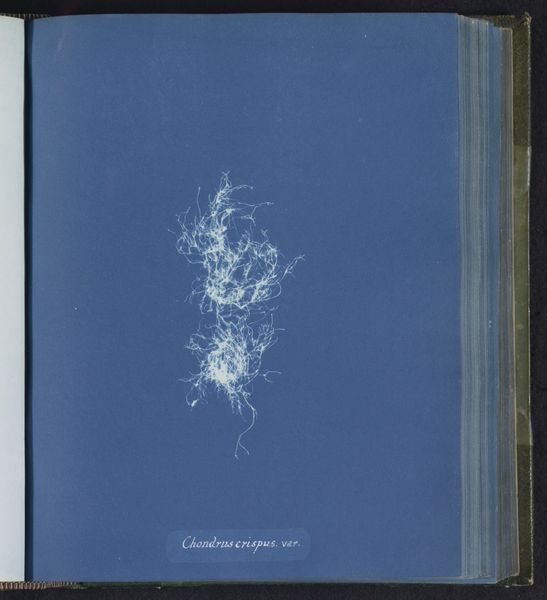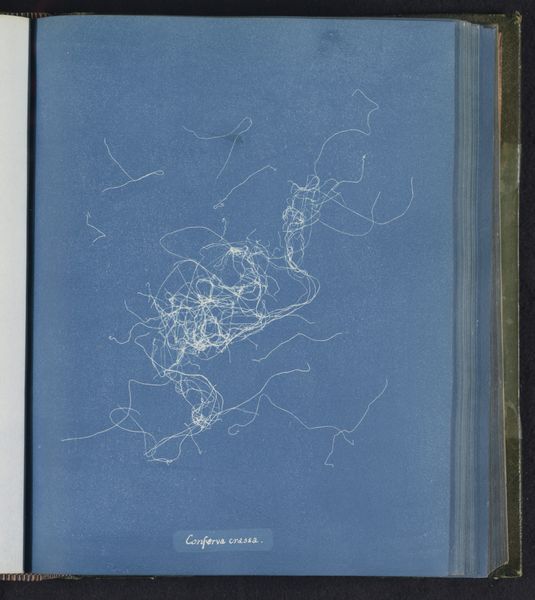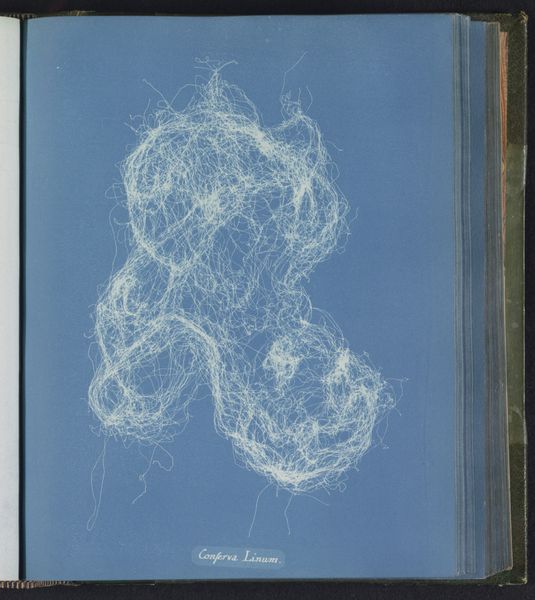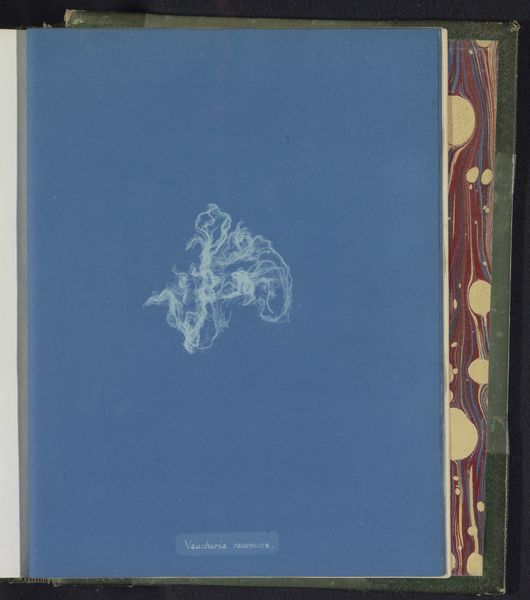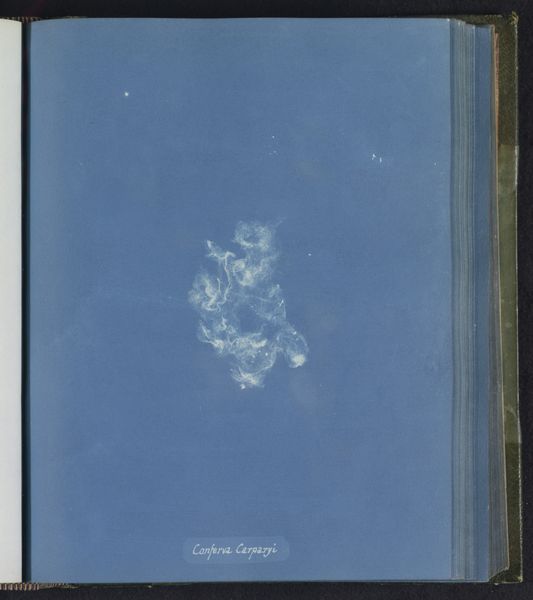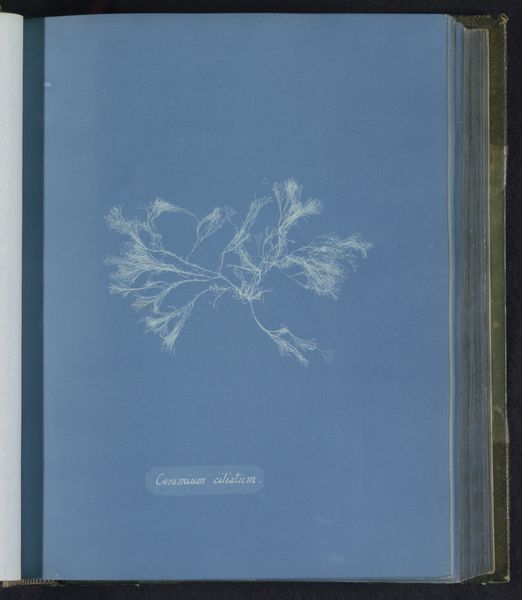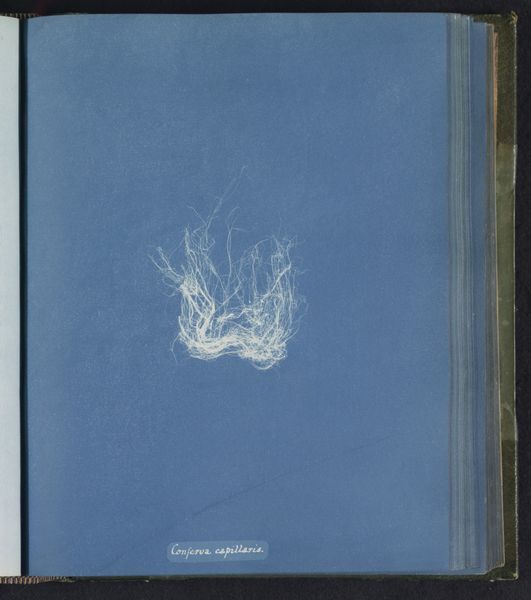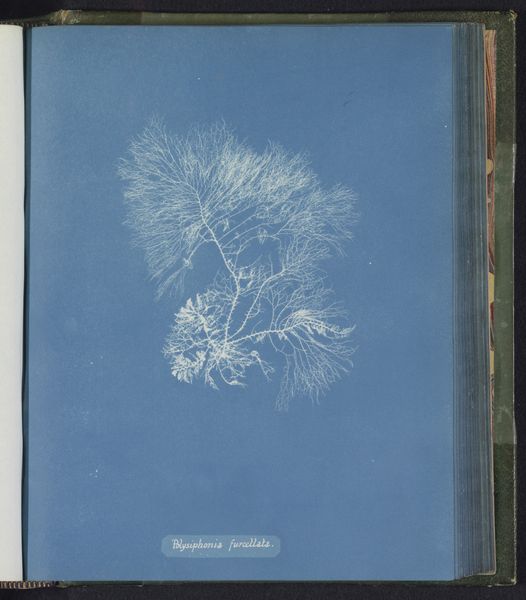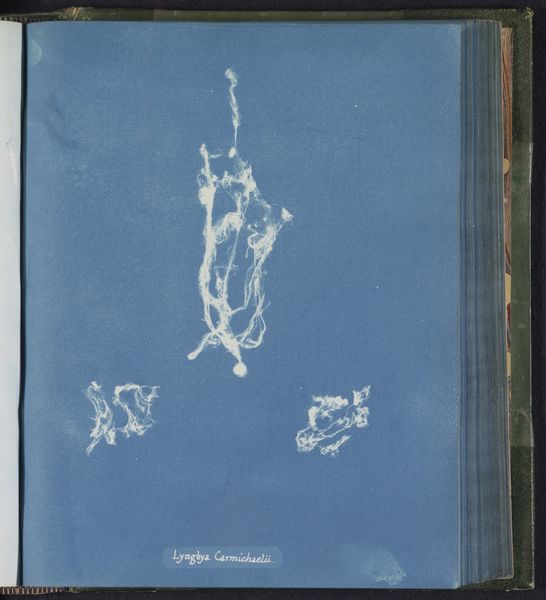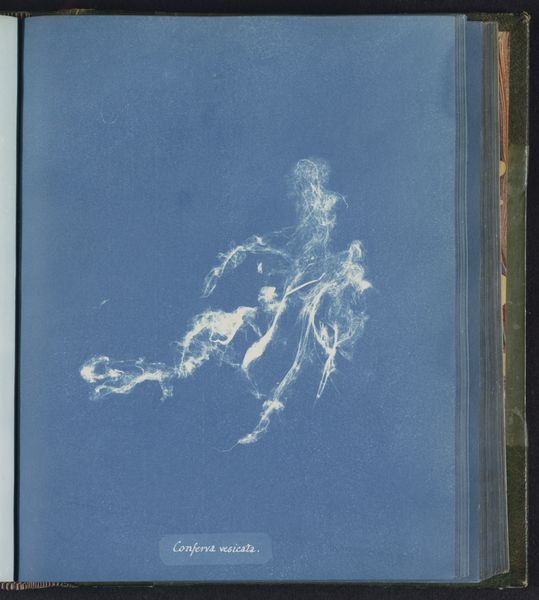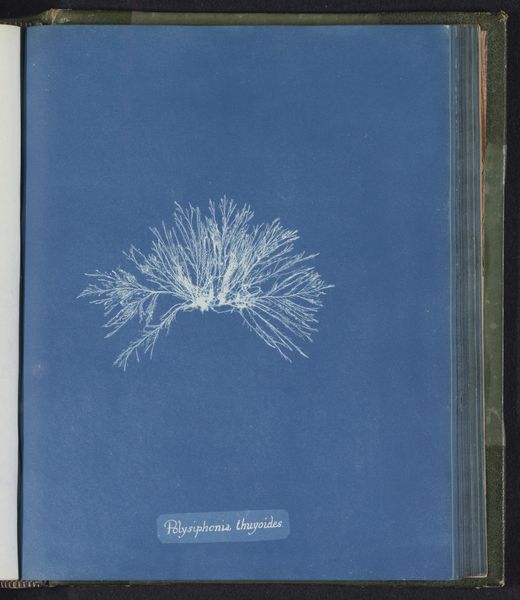
print, cyanotype, photography
# print
#
cyanotype
#
photography
#
romanticism
Dimensions: height 250 mm, width 200 mm
Copyright: Rijks Museum: Open Domain
Curator: Welcome. Here we have Anna Atkins’ “Conferva dissiliens,” a cyanotype from around 1843 to 1853. Editor: My first impression is of an ethereal cloud against an expansive blue sky. The image breathes a sense of calm fragility. Curator: Indeed. Atkins was a botanist who understood the scientific potential of photography. She employed the cyanotype process—a photographic printing procedure that produces a cyan-blue print—to document different species of algae, precisely Conferva dissiliens. Editor: The cyanotype process itself imparts significant symbolic meaning, the color blue has historically been associated with clarity, introspection, and knowledge. As a pioneer of scientific photography, the use of blue invokes feelings of revelation and understanding. It makes sense that she was also drawn to the aesthetics of romanticism. Curator: True, though it’s worth noting how Atkins’ use of cyanotype emphasizes the object itself. The composition relies on a stark contrast to bring out the algal form. Note the tonal variations achieved within a single color and how line and shape interact without traditional perspective or artistic intervention. The object becomes the subject. Editor: But the absence of color beyond the cyan casts a distinct mood. One almost wonders if Atkins selected this technique to abstract her botanical specimens into idealized forms. It suggests not just botanical classification but the very essence of algal life. Curator: You highlight a critical point—this image succeeds through its composition and the photographic process. Look closely at how its inherent formal elements are used. Observe, for instance, how the curling threads mimic one another in form to achieve symmetry within what looks to be random order. Editor: So it embodies science and symbolism; objective recording elevated into art by its evocative quality. These are relics and expressions. Curator: Yes, she offers not just a scientific record, but an invitation for us to meditate on the inherent beauty in the minutiae of nature. Editor: The artwork reminds us that knowledge can also be art. Curator: A crucial point to close on, highlighting the intersections between science and visual culture that Atkins work illuminates.
Comments
No comments
Be the first to comment and join the conversation on the ultimate creative platform.
